A visit to the Arizona-Sonora Desert Museum, Tucson
We’ve reached our final full day in Arizona – Friday, November 22nd. Our time in Tucson was split between the Arizona-Sonora Desert Museum and the Pima Air & Space Museum, then we drove to our hotel near the Phoenix airport.
Before leaving the Hotel McCoy, Andrea and I walked around the property and took a lot of photos. This was our room, #104.

The pool is salt water.

There are almost 70 art pieces around the property.
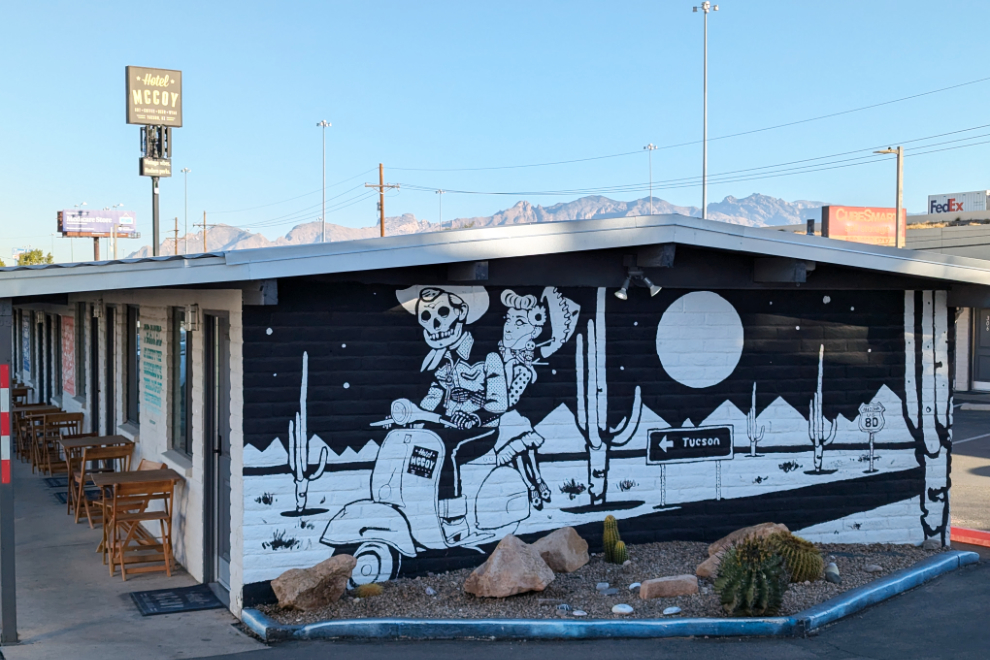
The largest piece covers the entire back wall of the main block of rooms. It’s an illustrated poem by Genevieve Dahl, “No Place Like Tucson.” It’s beautiful.
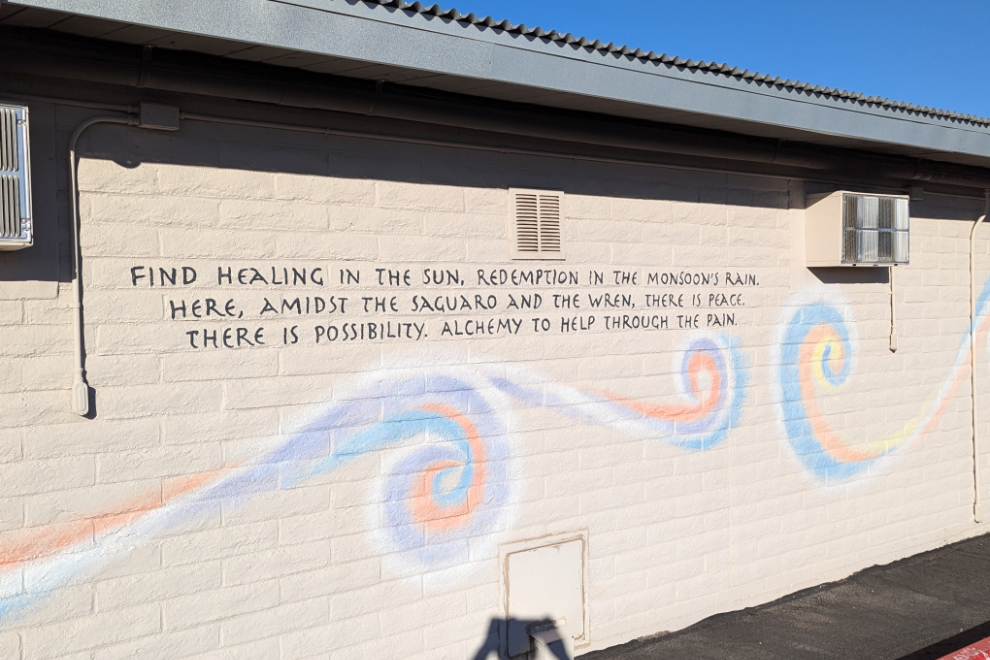
There are also some quotes, most of which resonated with me. “Many of my best adventures started with a wrong turn.”

Yes, the Hotel McCoy got another 5-star review from me at Google: “It’s rare for a hotel/motel to develop a personality to this degree, and I love the people who have done it – the ones who created it and those who maintain it like this. The art is wonderful, the property and our room spotlessly clean, and staff consistently friendly and professional. There is surprisingly little freeway noise.”
We had gotten the car pretty dusty out in the desert yesterday, so I spent $15 and ran it through a car wash before hitting the road. We don’t have car washes like this in the Yukon!

On the way back up to Saguaro National Park, a sign for Brown Mountain Trail Picnic Area made me curious, so we went down for a look. We were met on the access road by a coyote in beautiful condition. A coyote who is very used to being fed.

Aw, who could resist a beautiful smile like that?? Sorry, little one, we could.

The picnic site is beautiful, with large, well-spaced sites and expansive views.

Driving back up to N. Kinney Road.

With no knowledge of what it was, we decided to have a look at the the Arizona-Sonora Desert Museum. Arriving there just after 9:30, I was extremely surprised by the number of people there already. Walking up to the building, the first thing I saw was this 1960 Studebaker station wagon.
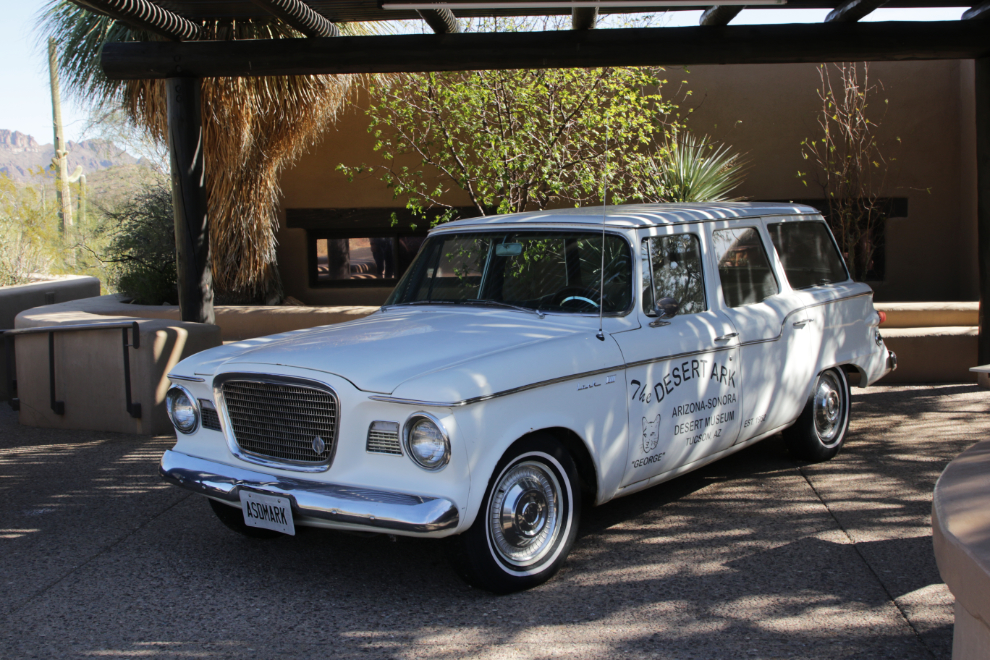
Standing beside the car was museum docent (volunteer) Pam Rossetter with a burrowing owl. We spent a few minutes talking to her.


Back to the Studebaker, this poster describes its former use in an outreach program. Dubbed the “Desert Ark,” Hal Gras used it to take a variety of animals to schools and community events.

Admission cost $29.95 for Andrea, $27.95 for me.

I was very surprised to find an extensive aquarium as the first exhibit, but it explains the significance of the Colorado River watershed right from Wyoming to the sea.

Our route took us through the gift shop. We almost never buy “stuff” anymore, but one of these carvings from Oaxaca, Mexico, sure tempted me.

This is a chuckwalla (Sauromalus varius). Found only on Isla San Esteban in the Gulf of California, it’s an endangered species, and the museum has established a successful captive breeding program.

There are a lot of snakes.

It’s nice to see what an Englemann prickly pear (Opuntia engelmannii) looks like in May when it’s in flower.

There are frogs!

This is a Merriam’s kangaroo rat (Dipodomys merriami). Perfectly adapted to life in the desert, they can survive without ever drinking any water. It looks like he’s one of the possible residents of the holes we wondered about.

At the introductory area to learn about deserts, museum docent (a volunteer guide) Aubrey Mendelow offered us a tour of about an hour and a half, and we were happy to accept. Aubrey is seen on the right in the next photo

The start. The Sonoran Desert has 6 subdivisions: the Lower Colorado River Valley, the Central Gulf Coast, Vizcaino, the Arizona Upland (Tucson is in this subdivision), the Plains of Sonora, and Magdalena.

This was going to be great!

Prickly pear cactus and a creosote bush (Larrea tridentata), which smells just like creosote.

The seldom-seen top of a Saguaro (Carnegiea gigantea).

Aubrey had a bag full of stuff to show us – cards, photos, containers of various seeds. This photo shows a Saguaro budding and in flower.

Freezing temperatures broke the tissue in this Saguaro’s arm enough to make it droop to the ground but not enough to kill it, so the arm is starting to grow upwards again.

The number and variety of flowers was wonderful after not seeing any for months.

This is a desert spoon, Dasylirion wheeleri.

There are fairly large habitats for both cougar and bears. It was funny to see the cougar, with all sorts of great places to be, laying right in front of the high viewing glass. This has apparently become his favourite place.


This is a Black-throated Magpie jay (Calocitta collei), an omnivorous fellow who eats anything from berries and insects to small rodents.

I was now lost in the maze of this property – this map will give you an idea of how large it is. It is said by some to now be Arizona’s second biggest tourist attraction.

There are some amazing panoramic views from the southwestern edge of the property, and a rustic viewing deck enhances that experience. Sunsets must be exquisite! (the museum closes at 5 pm, though, just before the actual sunset)

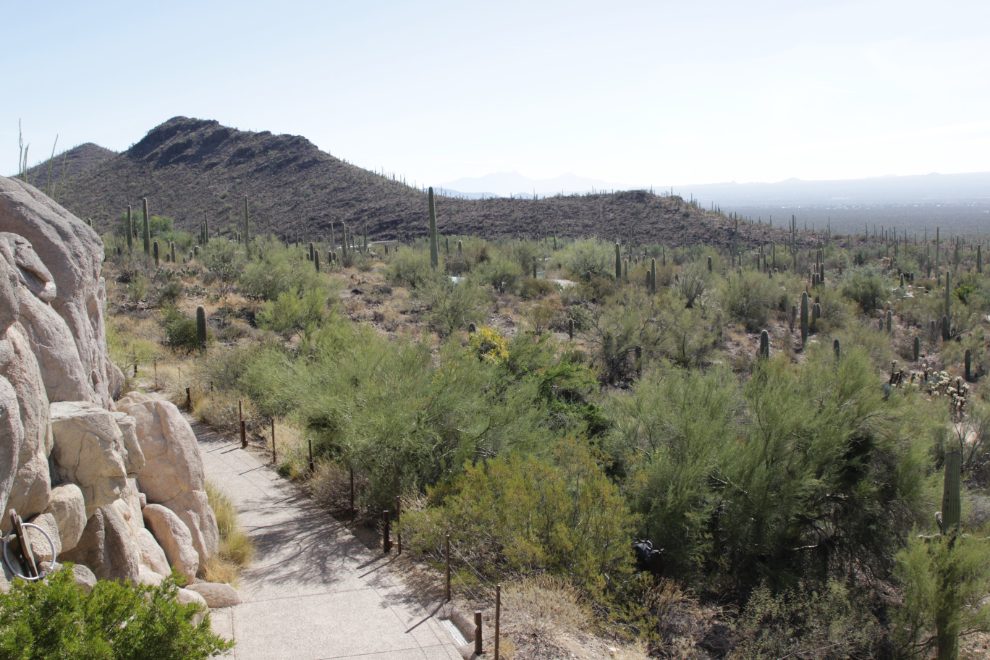
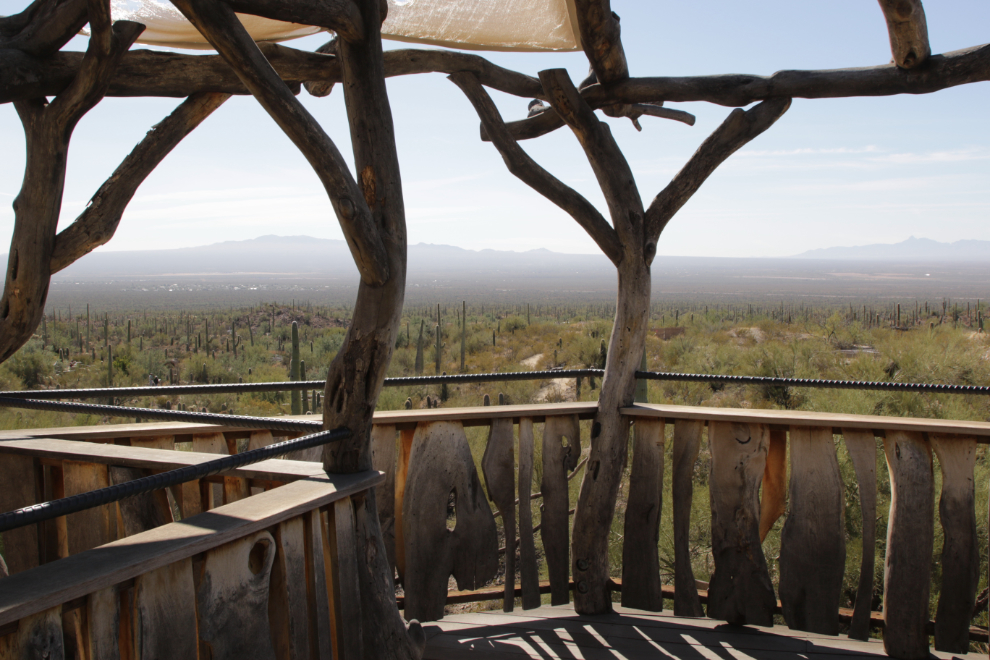
I was excited about coming to a hummingbird habitat, and once again surprised to see that the Sonoran desert has more species of hummingbirds than any other part of the United States. This was a dud, though – we saw one hummingbird about 20 feet away, and nobody else seemed to be having any better luck.


Aubrey was an amazing guide – certainly one of the best I’ve ever had anywhere. The hour-and-a-half we expected passed without notice and we just kept walking and absorbing as much of his knowledge as we could. He arrived from Milwaukee 18 years ago, and has certainly found where he belongs. It always feels really good to me to be with someone who has found that place, and I mentioned it to him. He agree that this is where he belongs 🙂
A group of desert spoons.

Some of the artwork, like this very large butterfly sculpture, stopped me in my tracks. Wow.

Thousands of Mother Nature’s creatures have found this welcoming place and don’t need to be caged or restrained in any way. There are a lot of bees of a few species…

…and butterflies and moths.

An organ pipe cactus.

The flowers of some species of cactus provide a startling contrast to their harsh environment.

After almost 3 hours, we said thank you and good-bye to Aubrey. Andrea and I both needed some lunch and quiet time to recharge. The food in the main restaurant, which was spacious and almost empty, was very good.
At 1:25, four hours after arriving for a 1-hour visit, we headed back to the car.

We now needed a new plan for the rest of the day. My #1 priority was the Pima Air & Space Museum, and Andrea was okay with that, so we crossed Saguaro National Park and “Old Tucson” off the list and were on our way.
